Wood floors bring an unparalleled sense of warmth and natural beauty to any room, and the kitchen is no exception. Moving away from the traditional tile or linoleum, homeowners are increasingly opting for the cohesive and inviting appeal of hardwood. A wooden floor grounds the space, creating a seamless transition from adjoining living areas and providing a comfortable surface underfoot. Whether you prefer a rustic farmhouse ambiance or a sleek, contemporary design, there is a wood flooring option that can perfectly complement your style, turning the heart of your home into a truly welcoming and aesthetically pleasing environment.
1. Light Oak Wood Floors for an Airy Scandinavian Kitchen
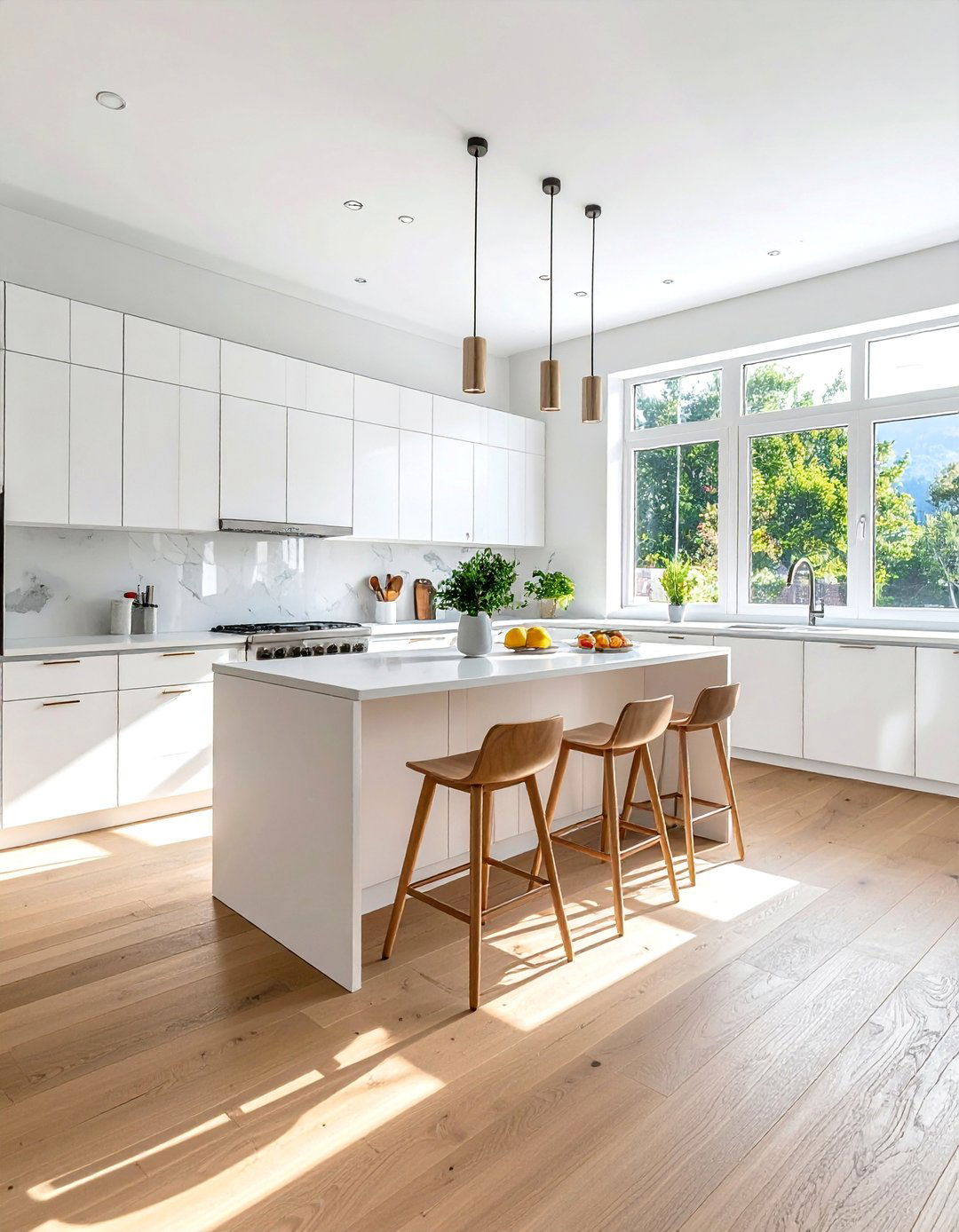
For those seeking a bright and minimalist aesthetic, light oak wood floors are a cornerstone of Scandinavian kitchen design. Their pale, neutral tones and subtle grain patterns reflect natural light, making the entire space feel larger and more open. This type of flooring pairs beautifully with classic Scandi elements like flat-panel white or light gray cabinets, simple hardware, and uncluttered quartz countertops. The inherent warmth of the oak prevents the minimalist design from feeling cold or sterile, creating a perfect balance between simplicity and comfort. This choice establishes a clean, organic foundation that is both timeless and effortlessly chic.
2. Dark Walnut Wood Floors for a Sophisticated Kitchen
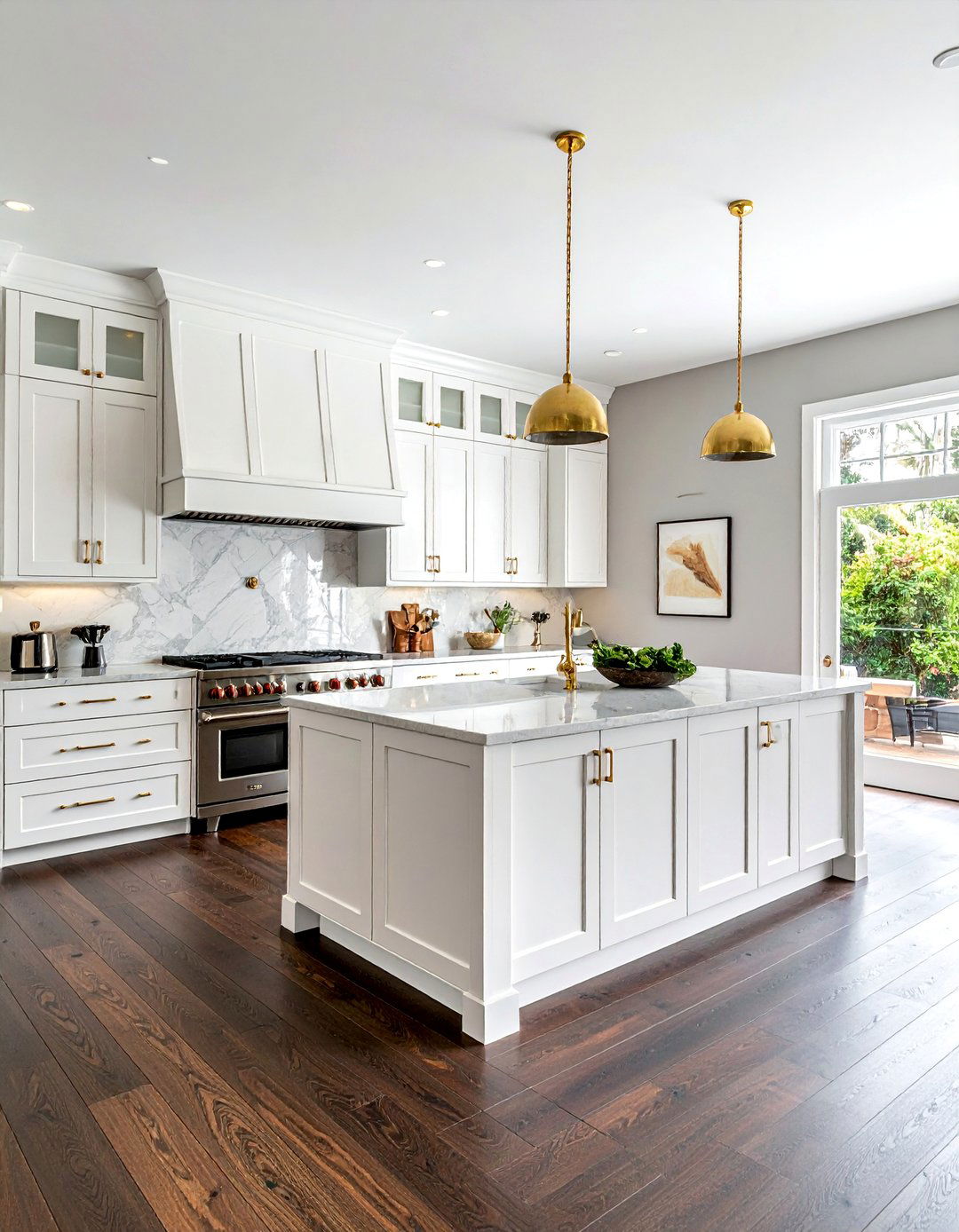
Introducing a sense of luxury and depth, dark walnut wood floors can transform a kitchen into a sophisticated and dramatic space. The rich, chocolatey hues and elegant grain of walnut create a stunning contrast when paired with light-colored cabinetry, such as crisp white or soft cream, making both elements stand out. This flooring choice works exceptionally well in larger kitchens with ample natural light to prevent the space from feeling too heavy. To complete the look, consider incorporating metallic accents like brass or gold in hardware and light fixtures, which will beautifully complement the warm undertones of the dark wood for a truly refined finish.
3. Reclaimed Wood Floors for a Rustic Farmhouse Kitchen
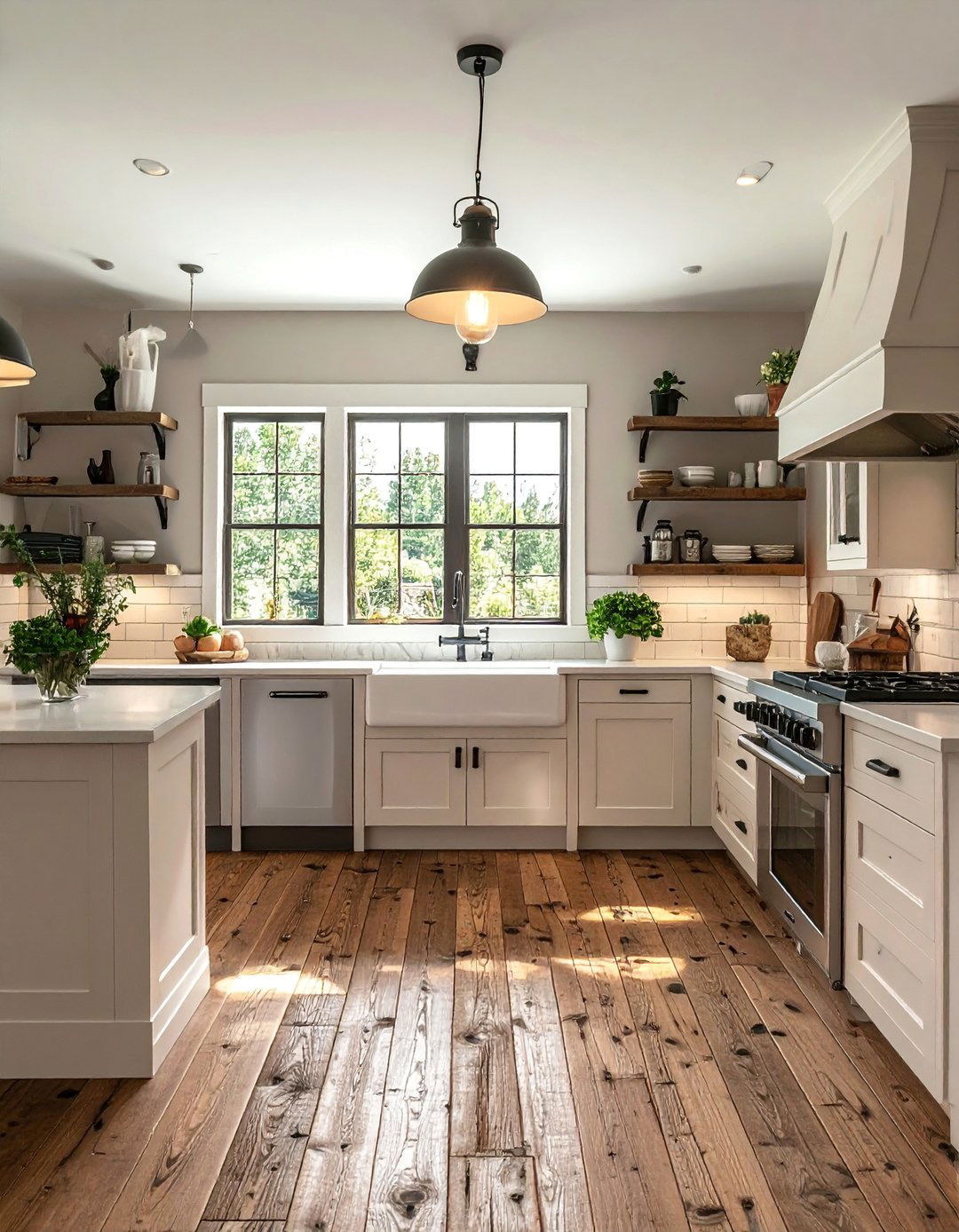
To achieve an authentic rustic farmhouse look, nothing compares to the character of reclaimed wood floors. Sourced from old barns, factories, or other historic structures, this flooring brings a unique story and timeworn patina into your kitchen. Each plank features distinctive knots, nail holes, and grain variations that add unparalleled texture and a sense of history. Reclaimed wood pairs perfectly with farmhouse sinks, shaker-style cabinets, and open shelving. The inherent durability and aged appearance mean that minor scratches or dents from daily life will only enhance its charming, lived-in character, making it a practical and stylish choice.
4. Hickory Wood Floors for a Durable, High-Traffic Kitchen
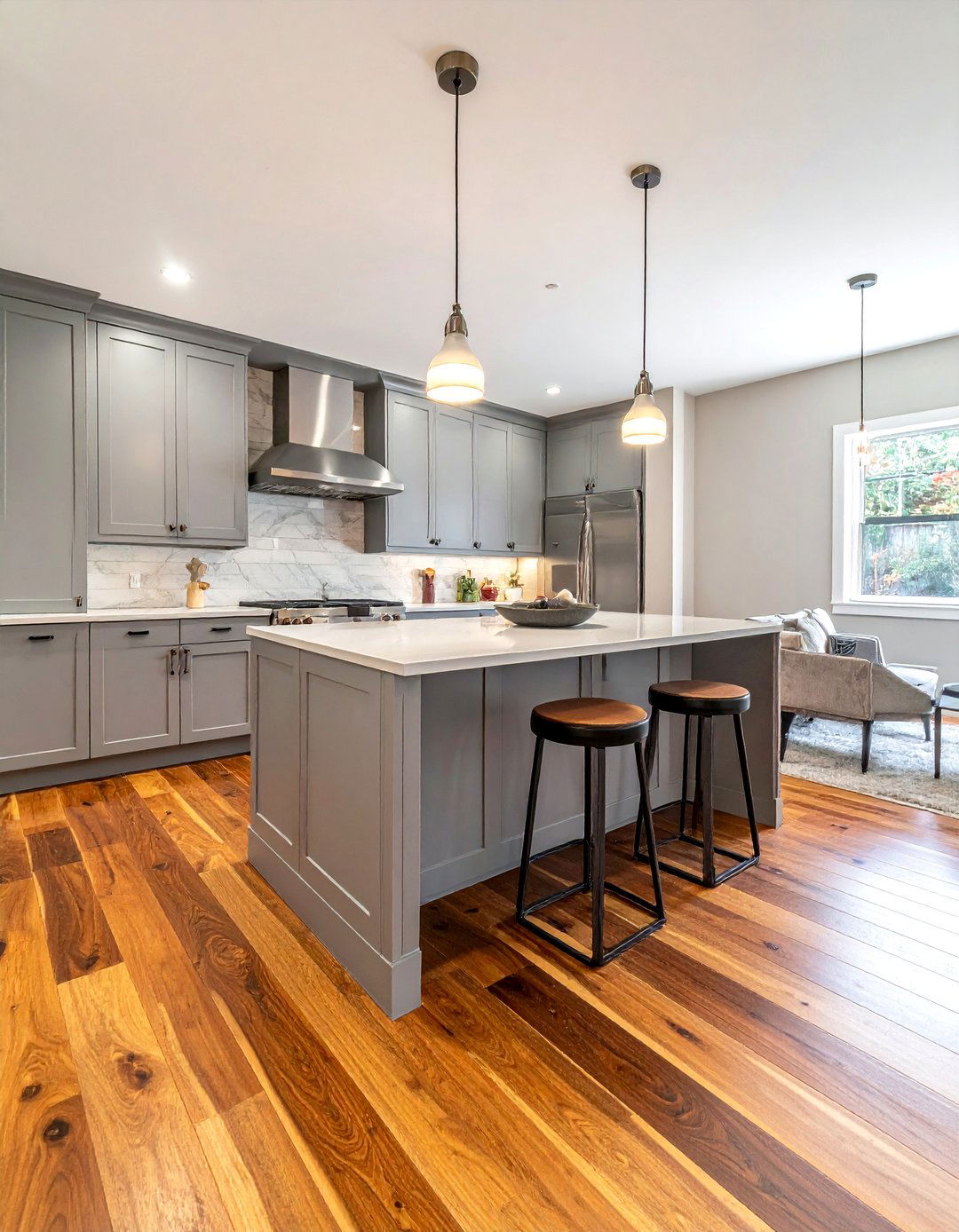
When durability is a top priority, hickory wood floors are an excellent choice for a busy kitchen. As one of the hardest domestic woods, hickory is exceptionally resistant to scratches, dents, and the general wear and tear of a high-traffic area. Its distinctive grain patterns and significant color variation between planks, ranging from creamy white to dark brown, create a bold and visually interesting foundation. This natural variation helps to camouflage minor spills and crumbs, making it a forgiving option for families. Hickory’s robust nature ensures your kitchen floor will remain beautiful and functional for many years to come.
5. Gray-Washed Wood Floors for a Coastal Kitchen Vibe
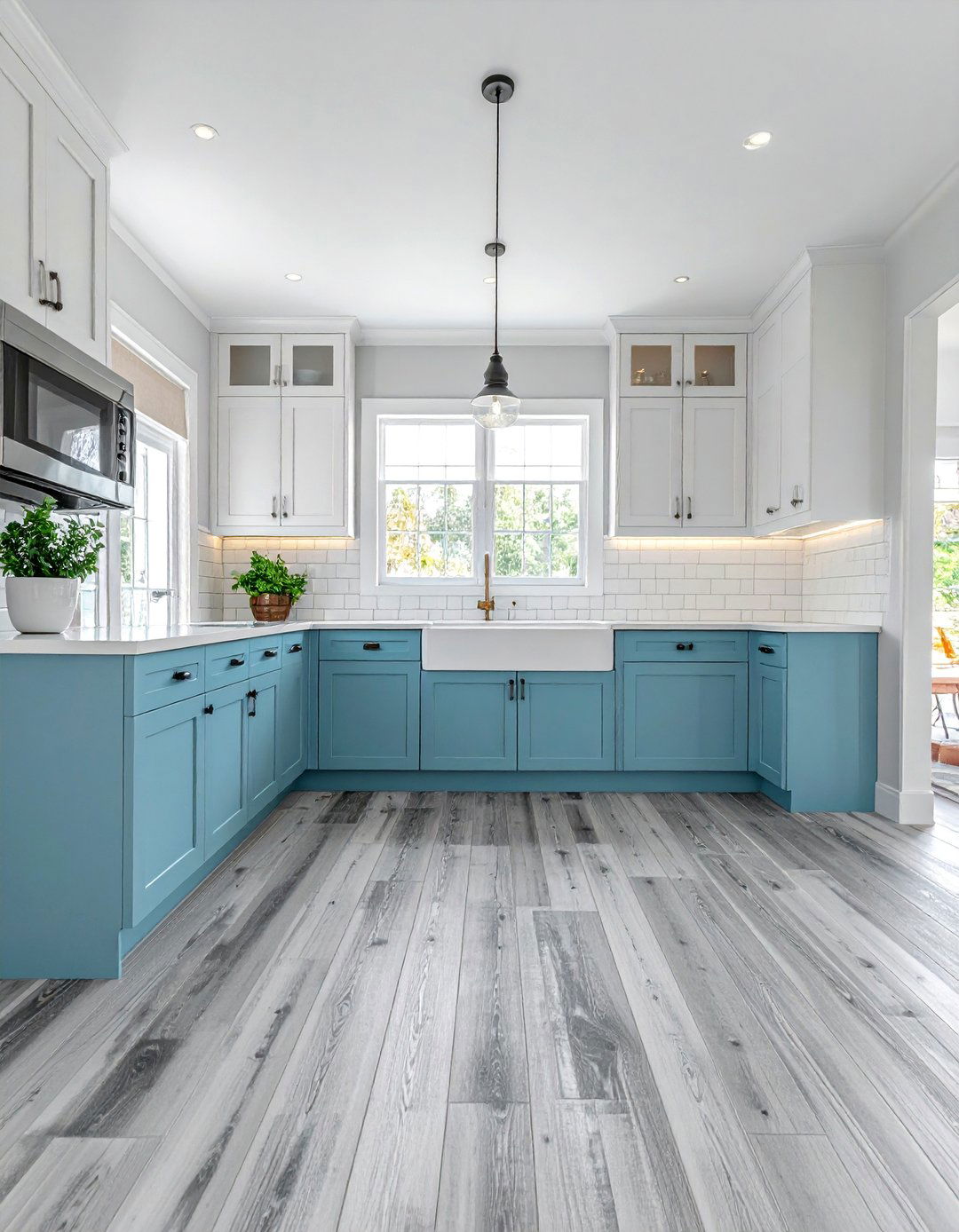
Capture the relaxed and breezy essence of a coastal retreat with gray-washed wood floors in your kitchen. This finish mimics the look of sun-bleached, weathered wood found by the seaside, creating a soft, serene, and airy atmosphere. The subtle gray tones provide a neutral backdrop that complements a coastal color palette of whites, soft blues, and sandy beiges. Pair this flooring with white cabinetry, light-colored countertops like marble or light quartz, and nautical-inspired decor. The gray-washed finish adds a touch of rustic charm without overwhelming the space, resulting in a light-filled and tranquil kitchen environment.
6. Wide Plank Wood Floors for an Expansive Kitchen Feel
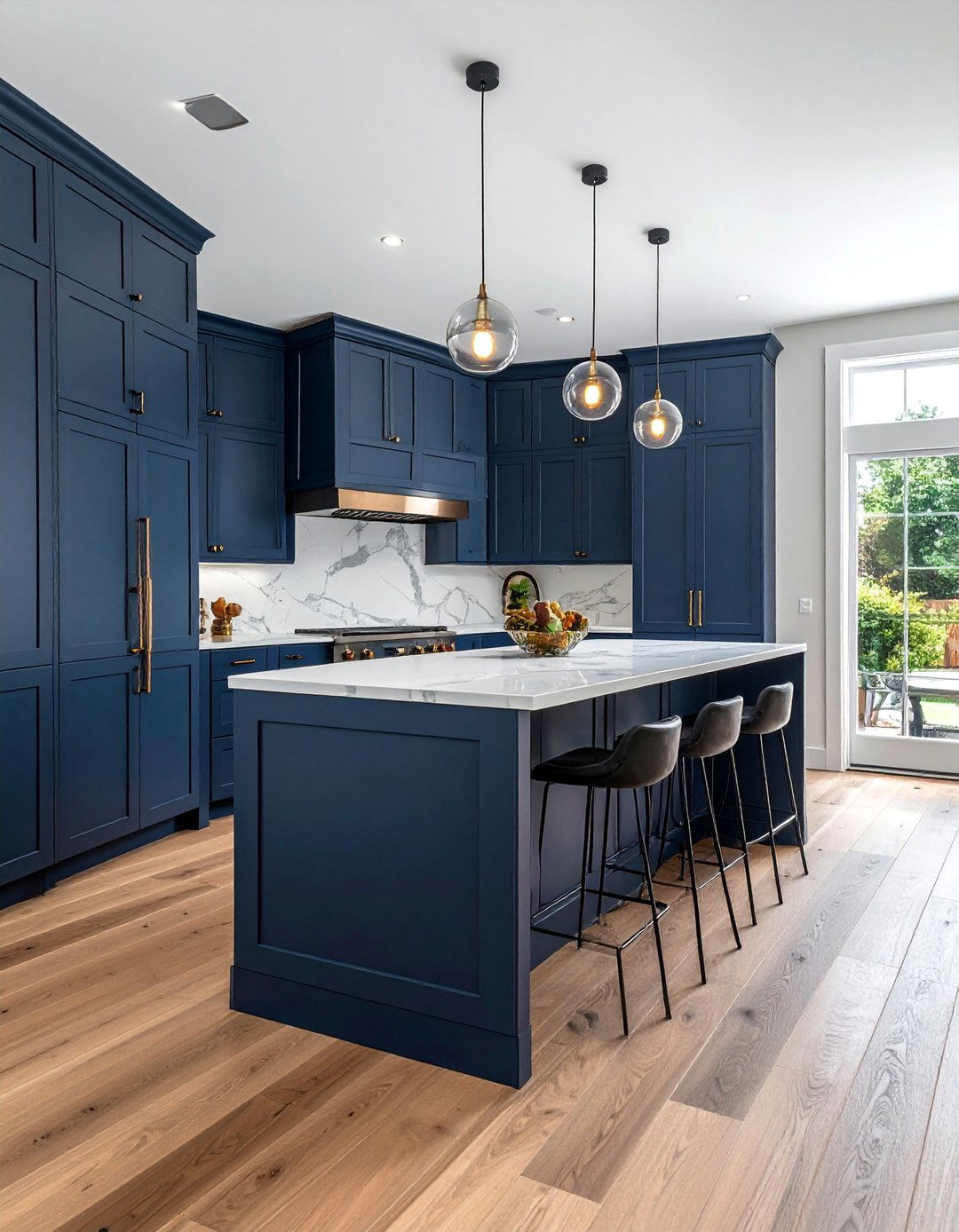
To create a sense of grandeur and openness, consider installing wide plank wood floors. Planks that are wider than the standard three inches have fewer seams, which results in a less busy and more expansive appearance. This effect can make both small and large kitchens feel more spacious and uncluttered. Wide planks are available in various wood species and finishes, allowing them to fit into diverse design styles, from rustic to contemporary. They particularly shine in open-concept homes, where they can create a seamless, flowing look from the kitchen into adjacent living and dining areas, unifying the entire space beautifully.
7. Herringbone Pattern Wood Floors for an Elegant Kitchen
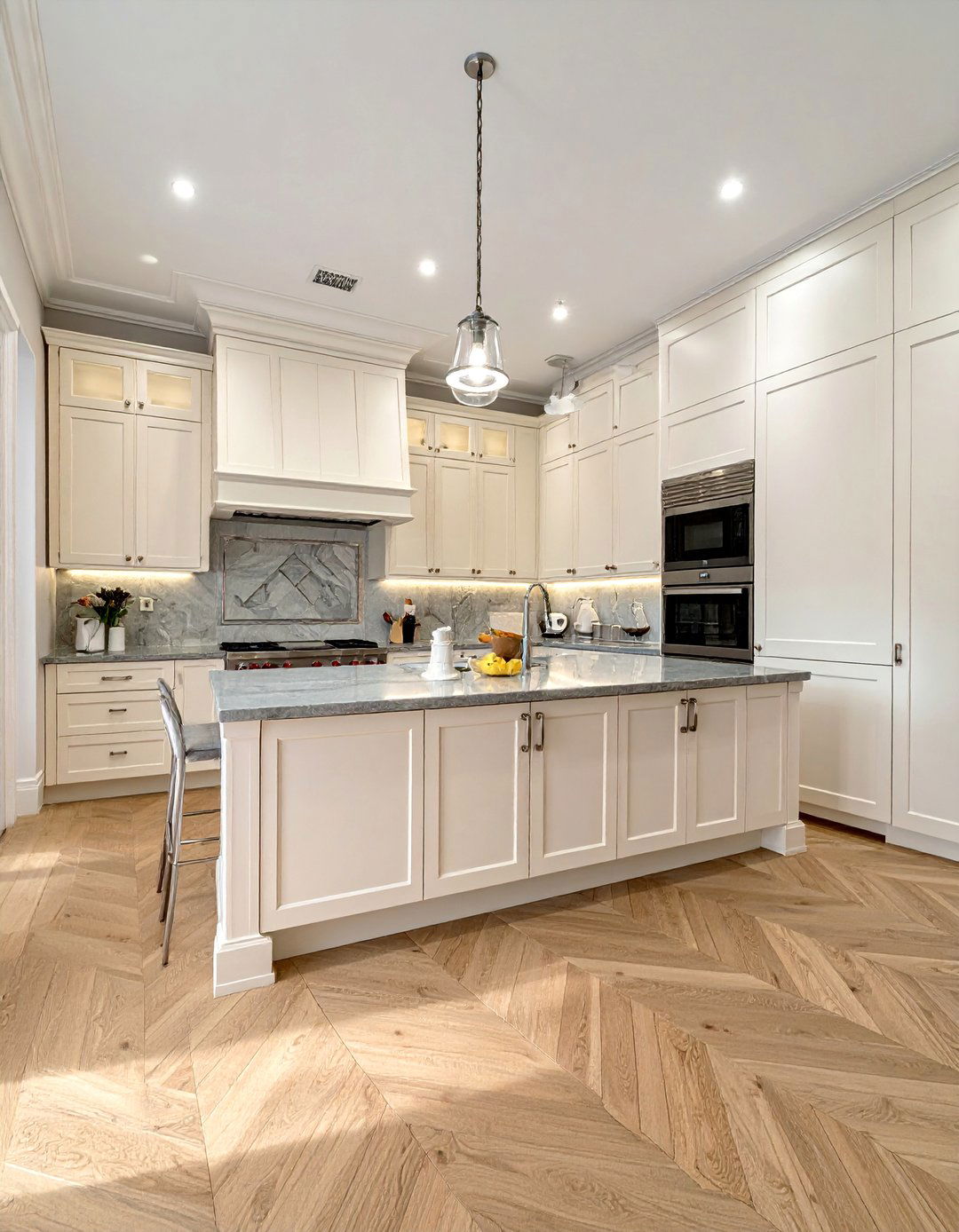
For a touch of timeless elegance and visual interest, a herringbone pattern wood floor is a spectacular choice for a kitchen. This classic arrangement involves laying short planks in a zigzag pattern, creating a sense of movement and sophistication. The intricate design elevates the entire room, turning the floor itself into a focal point. While it complements traditional and transitional kitchens exceptionally well, a herringbone floor can also add an unexpected layer of texture and luxury to a modern space. Using a species like white oak in a herringbone layout can keep the look fresh and contemporary while adding undeniable classic charm.
8. Ebonized Wood Floors for a Bold, Modern Kitchen
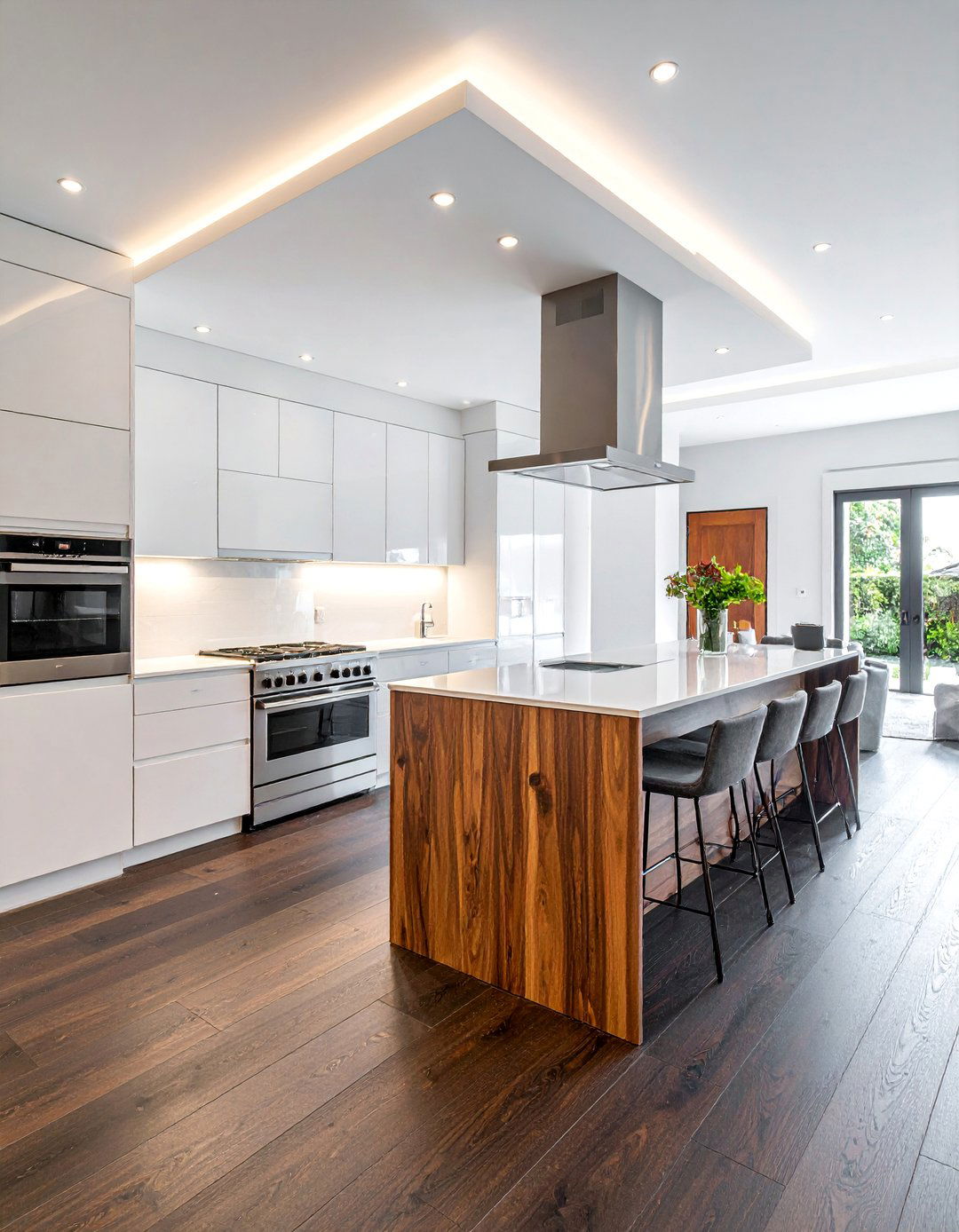
Making a bold and dramatic statement, ebonized wood floors provide a sleek and contemporary foundation for a modern kitchen. This deep, black finish is achieved by staining or treating the wood to create a uniform, saturated color that is incredibly chic. The dark flooring creates a powerful contrast with high-gloss white cabinets, stainless steel appliances, and minimalist hardware, resulting in a striking, high-impact design. To balance the darkness of the floors, ensure the kitchen has abundant lighting, both natural and artificial. Ebonized wood offers a sophisticated and daring alternative to traditional wood tones for a truly cutting-edge aesthetic.
9. Natural Maple Wood Floors for a Bright, Contemporary Kitchen
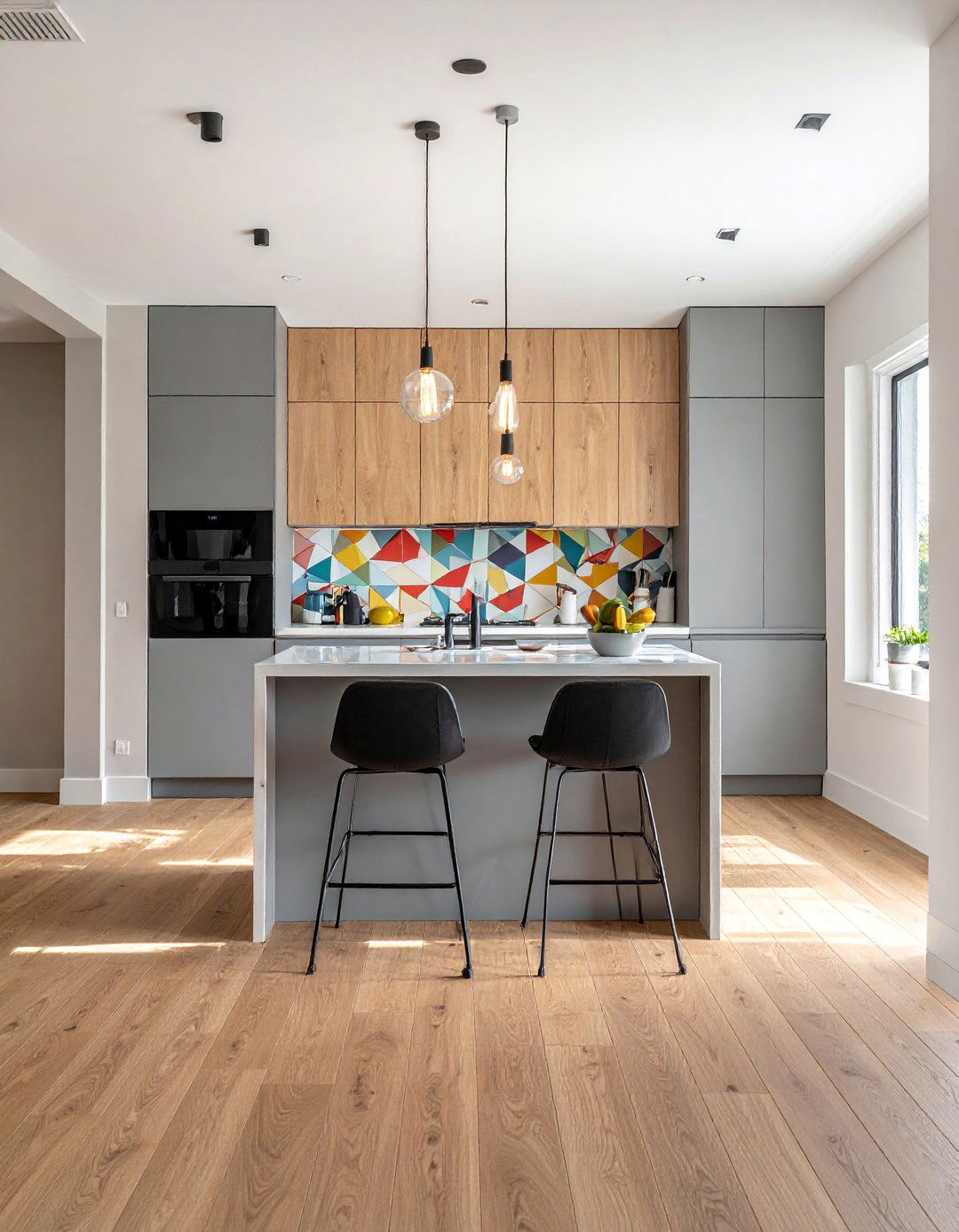
With its light, creamy color and subtle, uniform grain, natural maple wood flooring is an ideal choice for a bright and contemporary kitchen. The clean appearance of maple enhances natural light and contributes to a feeling of spaciousness and clarity. It provides a perfect neutral canvas that allows other design elements, such as colorful backsplashes or statement countertops, to take center stage. Maple's smooth texture and light tone pair seamlessly with the clean lines of minimalist cabinetry and sleek, modern appliances. Its inherent durability also makes it a practical option for a well-used kitchen, offering both understated style and long-lasting performance.
10. Hand-Scraped Wood Floors for a Textured, Lived-In Kitchen
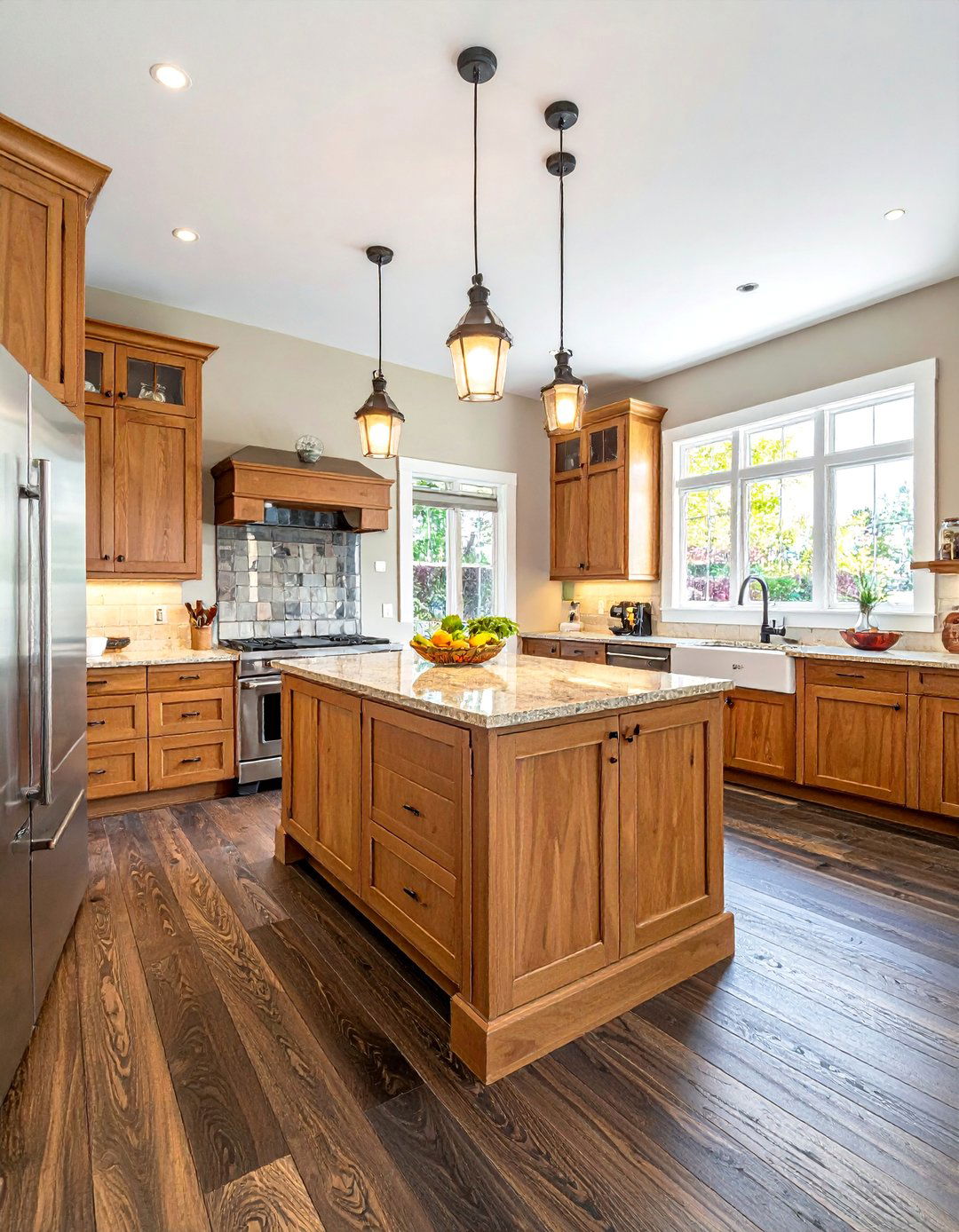
For a kitchen floor with rich texture and artisanal character, hand-scraped wood floors are an excellent option. This finishing technique creates long, smooth scrapes in the surface of the planks, replicating the look of floors from an era before machine finishing. The result is a unique, undulating texture that adds depth and a comfortable, lived-in feel to the space. This style is particularly effective at hiding minor scratches and dents, making it a great choice for active households with pets or children. It complements rustic, traditional, and even eclectic kitchen designs, adding a layer of handcrafted charm underfoot.
11. Bamboo Floors for an Eco-Friendly Kitchen
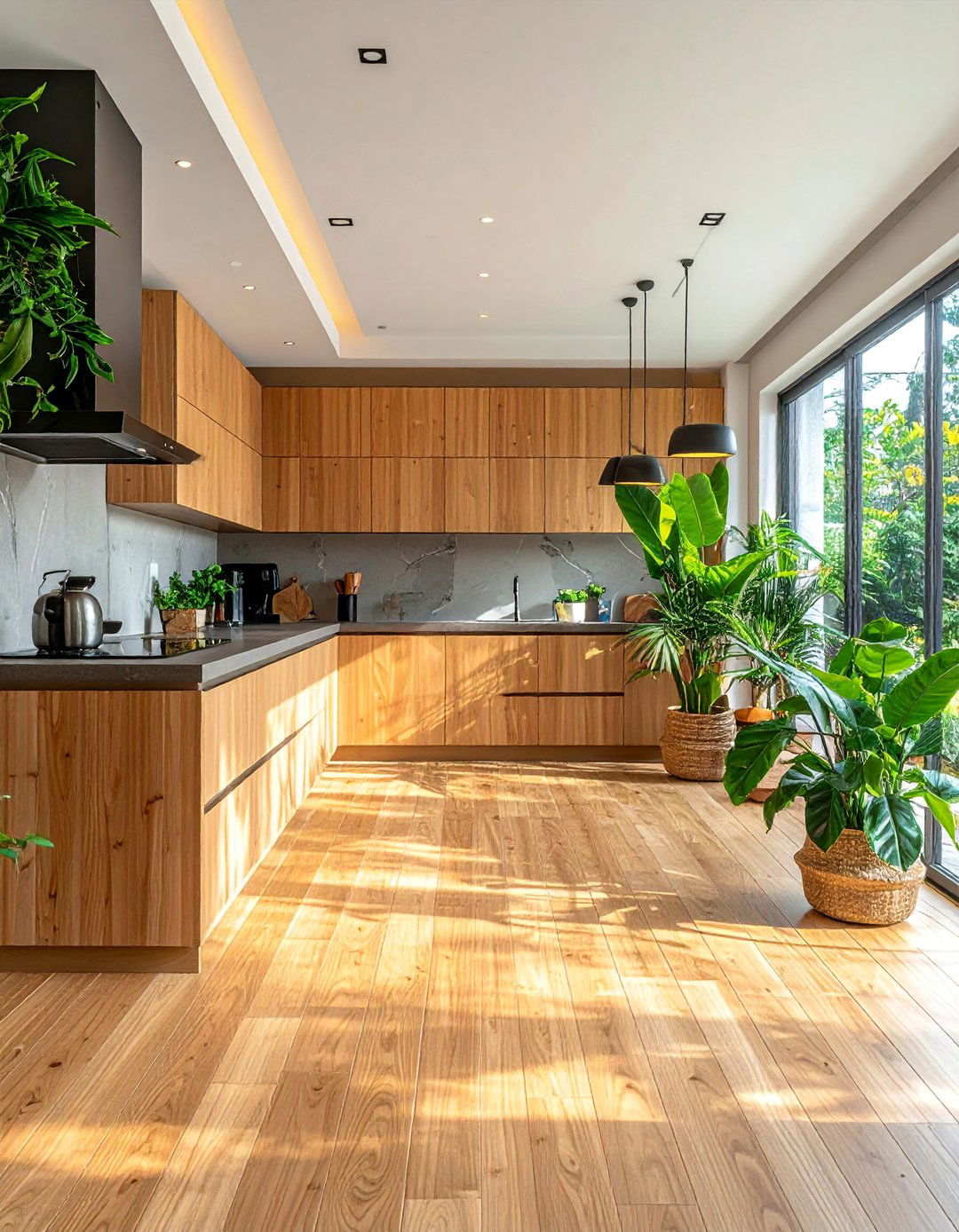
As a highly sustainable and eco-friendly alternative, bamboo flooring brings a unique and modern look to the kitchen. Technically a grass, bamboo is a rapidly renewable resource that offers hardness and durability comparable to many traditional hardwoods. Available in a variety of shades, from light, natural blonde to deep, carbonized amber, bamboo can suit numerous design preferences. Its clean, linear grain provides a contemporary aesthetic that works well with minimalist and Asian-inspired kitchen designs. Choosing bamboo allows you to create a stylish and resilient kitchen floor while making an environmentally conscious decision for your home.
12. Cherry Wood Floors for a Warm, Traditional Kitchen
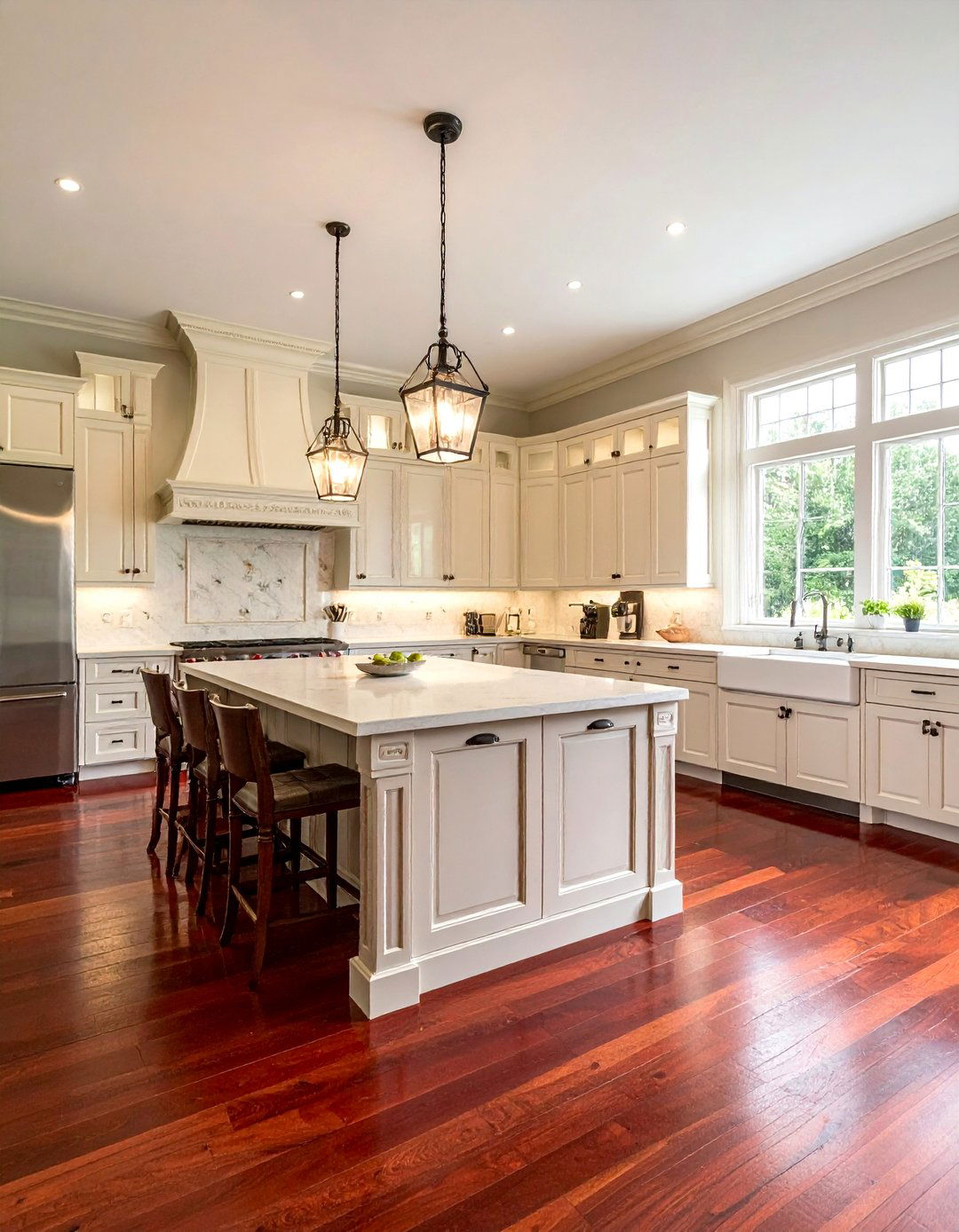
Cherry wood floors are prized for their rich, warm reddish-brown tones and smooth, satin-like finish, making them a perfect fit for a warm and inviting traditional kitchen. Over time and with exposure to sunlight, cherry wood naturally deepens in color, developing a beautiful, luxurious patina. This rich coloring pairs elegantly with classic cabinetry styles, such as raised-panel doors in cream or wood finishes, and ornate details like crown molding. Complemented by granite countertops and classic hardware, cherry wood floors create a welcoming atmosphere of timeless grace and comfort, anchoring the kitchen with a sense of enduring quality.
13. Distressed Wood Floors for an Industrial-Style Kitchen
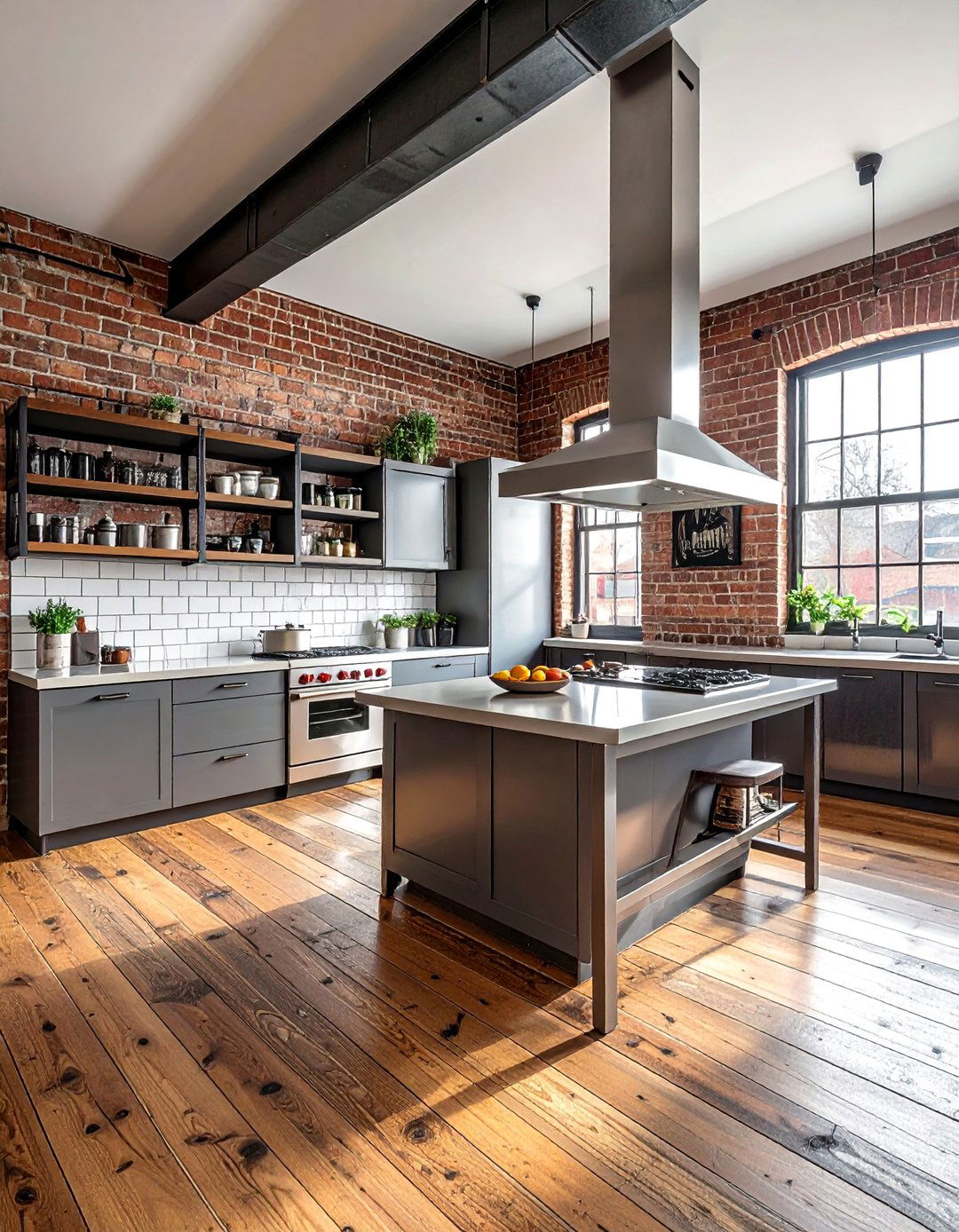
To capture the raw, utilitarian aesthetic of an industrial-style kitchen, distressed wood floors are a fitting choice. This flooring is intentionally aged to feature imperfections like saw marks, burns, and wormholes, giving it a rugged, factory-loft appeal. The heavily textured surface adds immense character and stands up well to the demands of a busy kitchen, as new marks simply blend in with the existing distressed finish. Paired with elements like exposed brick walls, stainless steel countertops, open metal shelving, and pendant lighting, distressed wood floors complete the industrial look by providing a warm, tactile contrast to the harder, colder materials.
14. Chevron Pattern Wood Floors for a Chic, Parisian Kitchen
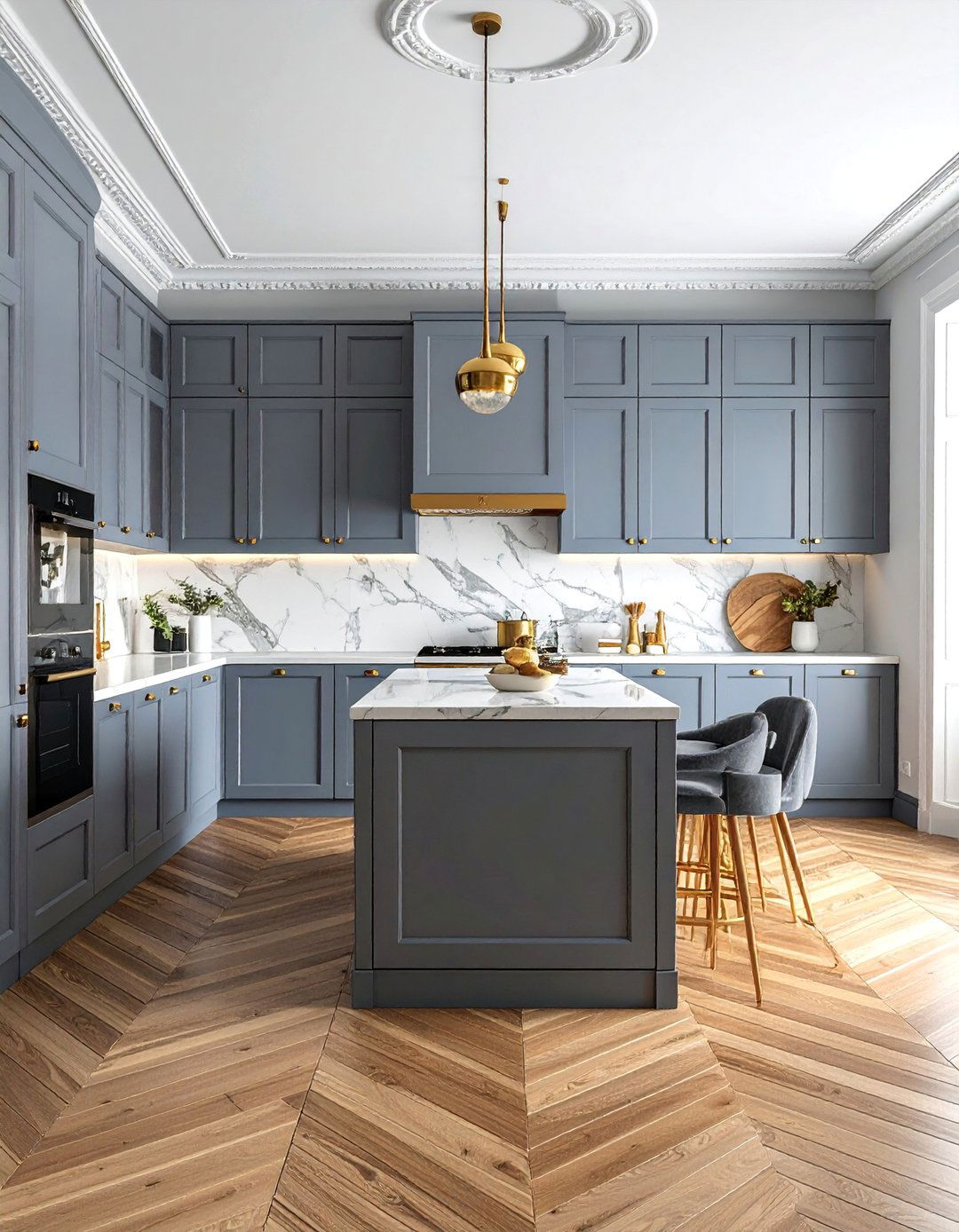
Evoke the sophisticated charm of a Parisian apartment with a chevron pattern wood floor in your kitchen. In this design, planks are cut at an angle and laid in a "V" shape, creating a clean, continuous zigzag that directs the eye and adds a sense of refined elegance. This pattern has a more uniform and formal appearance than herringbone, lending a chic and upscale feel to the space. It pairs beautifully with classic European design elements like ornate cabinetry, marble countertops, and decorative tile backsplashes. A chevron floor transforms the kitchen into a stylish and graceful setting perfect for both cooking and entertaining.
15. Mixed-Width Wood Plank Floors for a Custom Kitchen Look
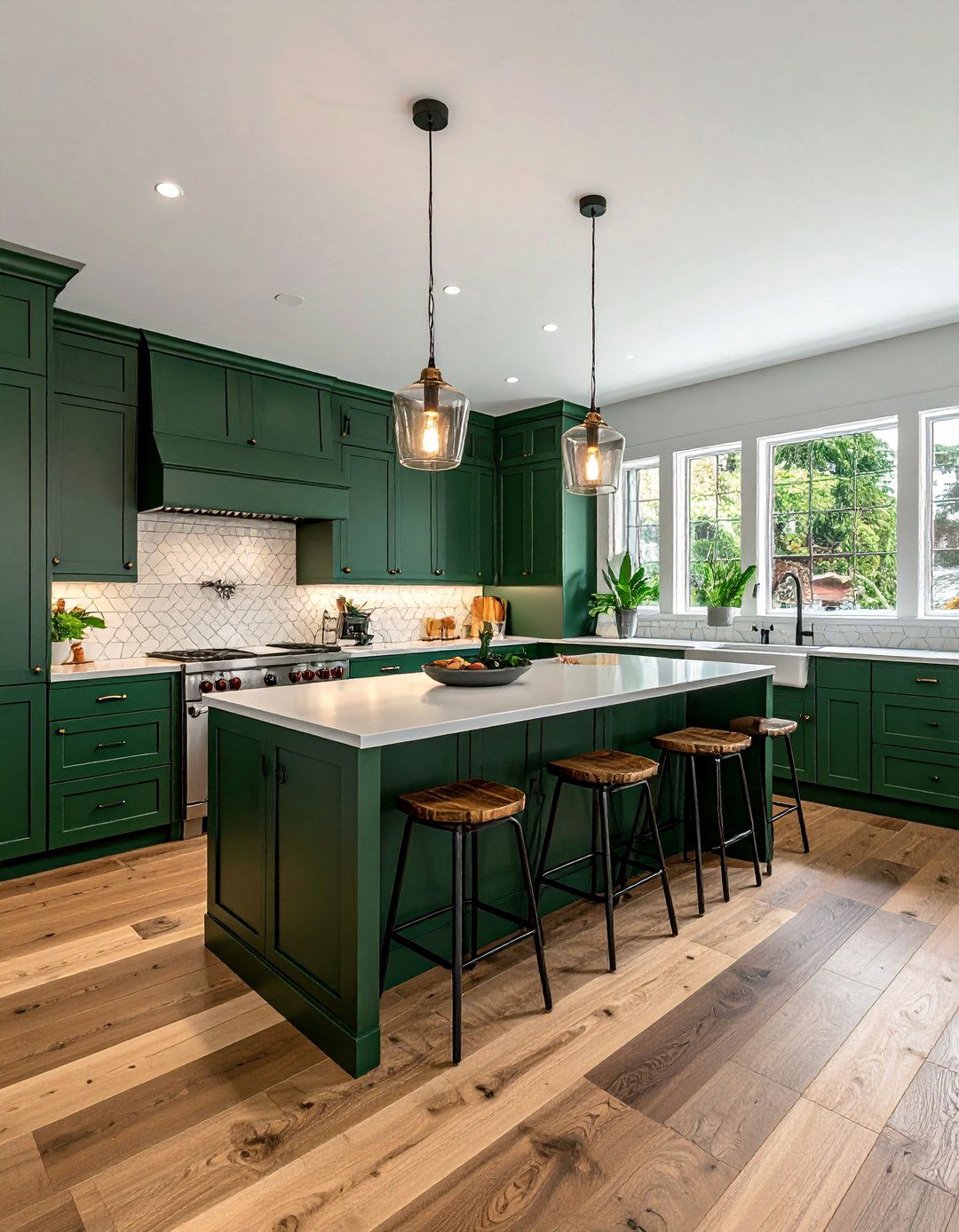
For a unique and dynamic kitchen floor, consider using mixed-width wood planks. This approach involves installing planks of varying widths, which breaks up the uniformity of a standard floor and creates a custom, visually engaging look. The varied pattern adds a rustic yet sophisticated charm, reminiscent of historic colonial homes. This style can be adapted to any wood species and finish, allowing for complete personalization. It draws attention to the floor in a subtle way, adding texture and character without overwhelming the space. Mixed-width planks are perfect for adding a bespoke touch that makes your kitchen feel truly one-of-a-kind.
Conclusion:
Ultimately, incorporating wood floors into a kitchen design is a fantastic way to add warmth, character, and timeless appeal. From the rustic charm of reclaimed pine to the sleek elegance of ebonized oak, the options are vast and versatile. Wood flooring successfully bridges the gap between functionality and style, creating a cohesive and inviting atmosphere that connects the kitchen to the rest of the home. With modern finishes providing enhanced durability against moisture and wear, wood floors stand as a beautiful and practical foundation for the heart of any home.

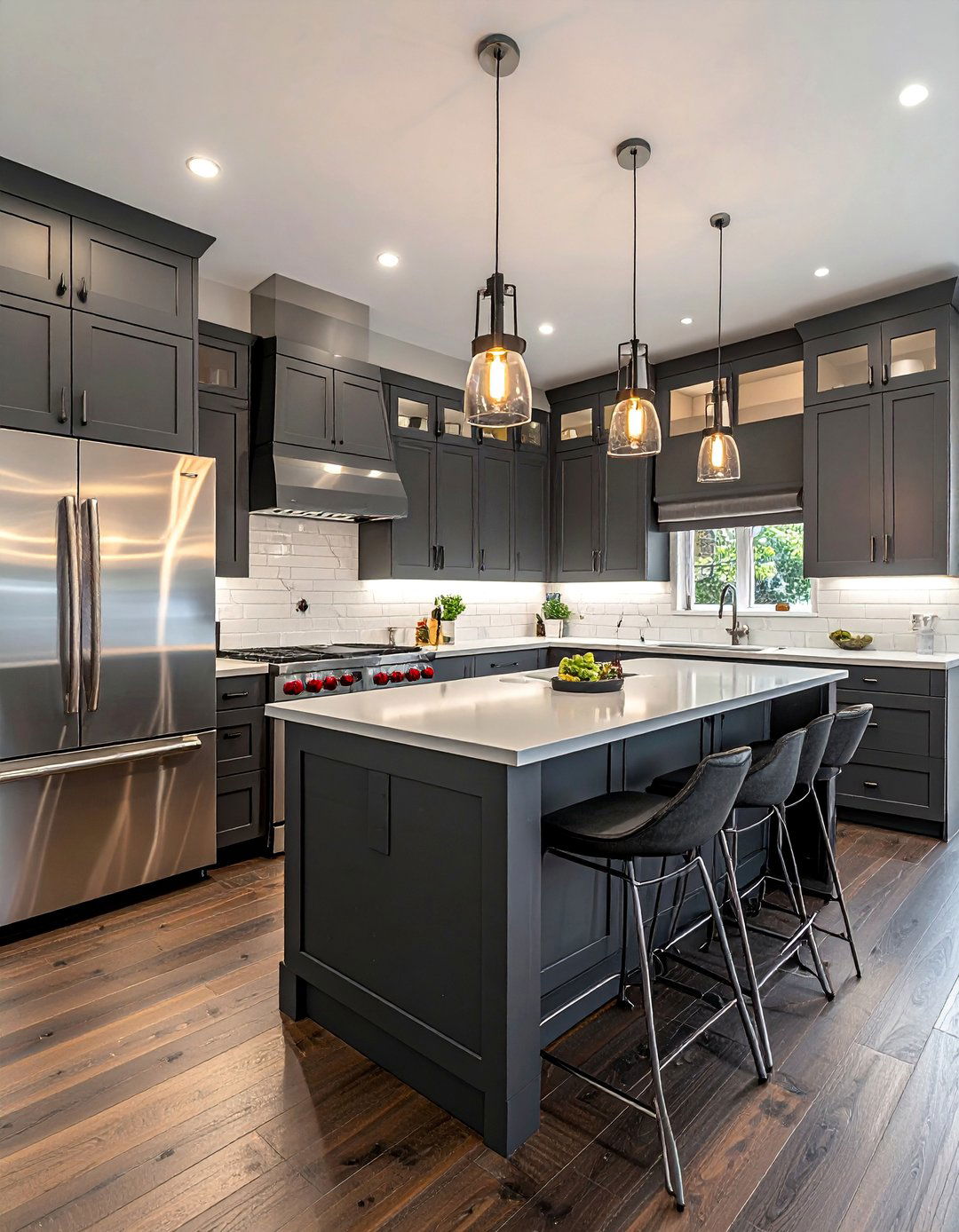
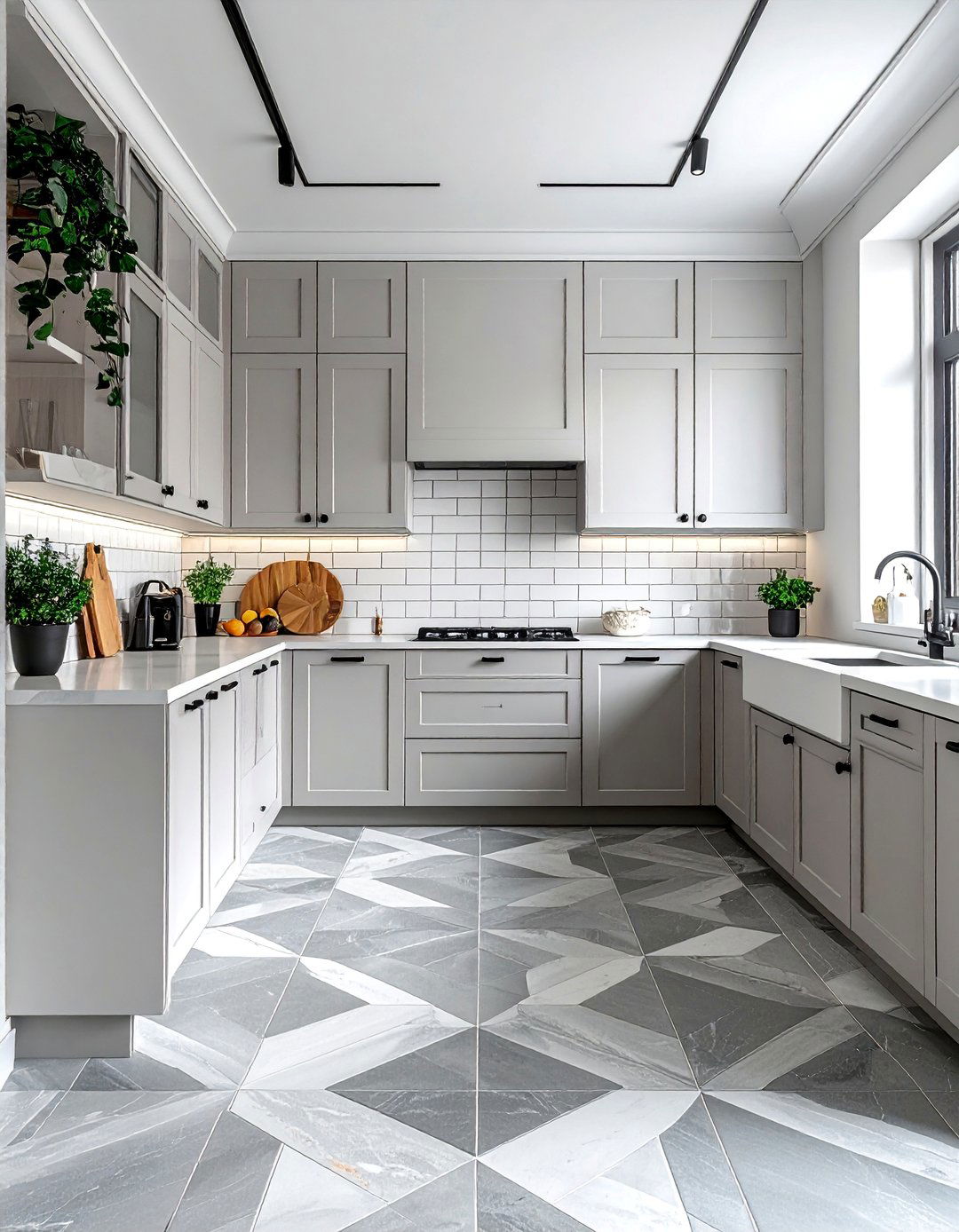
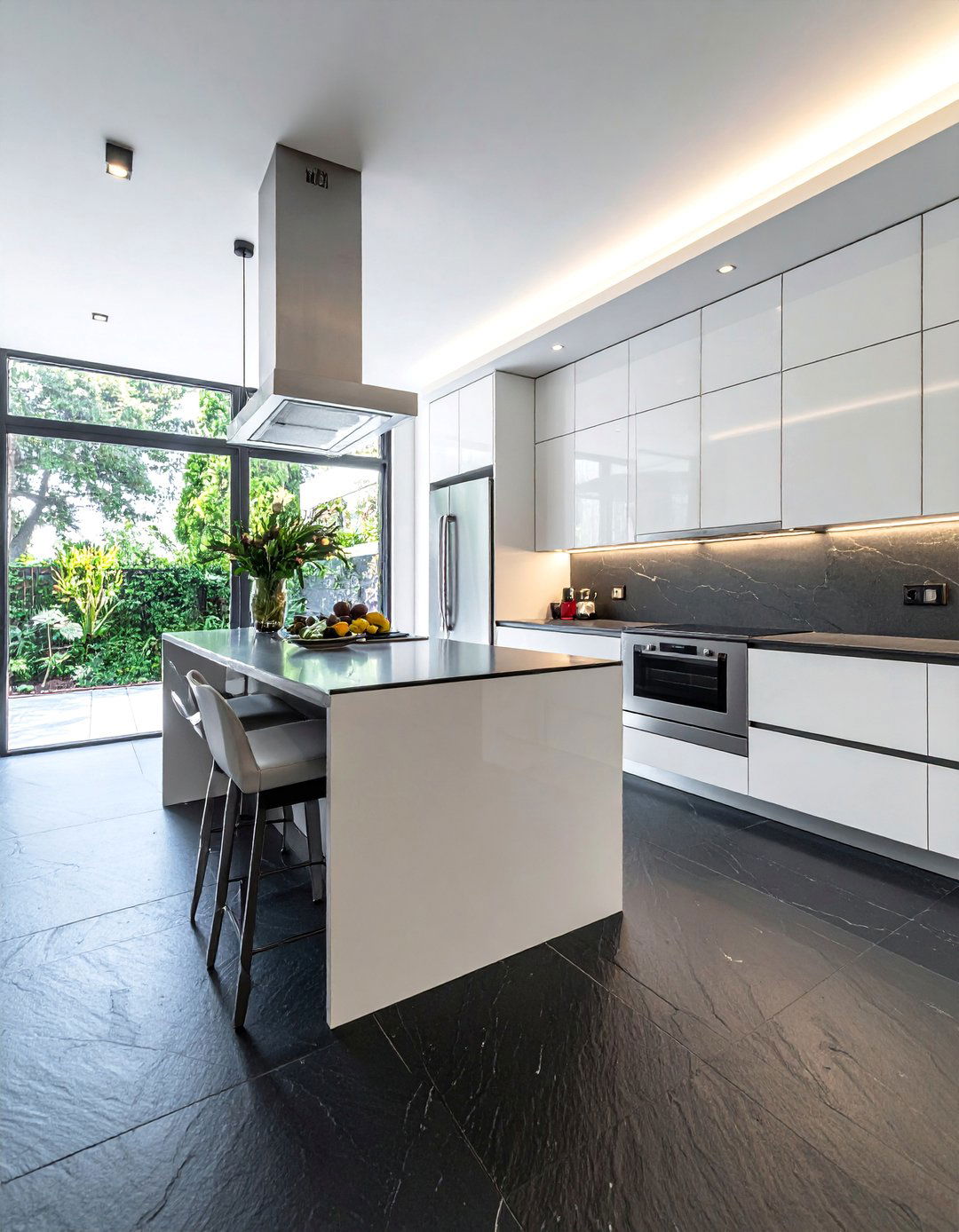
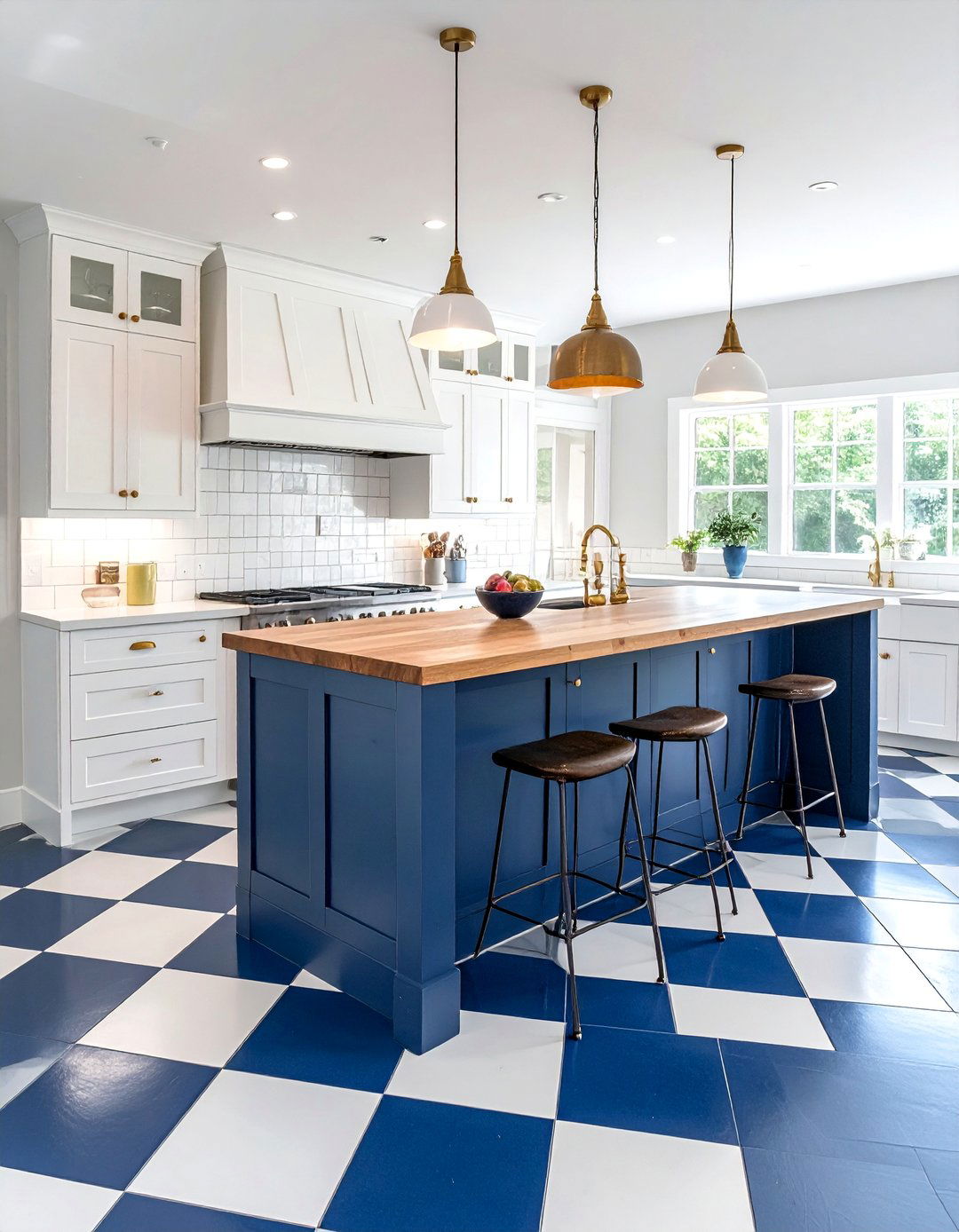
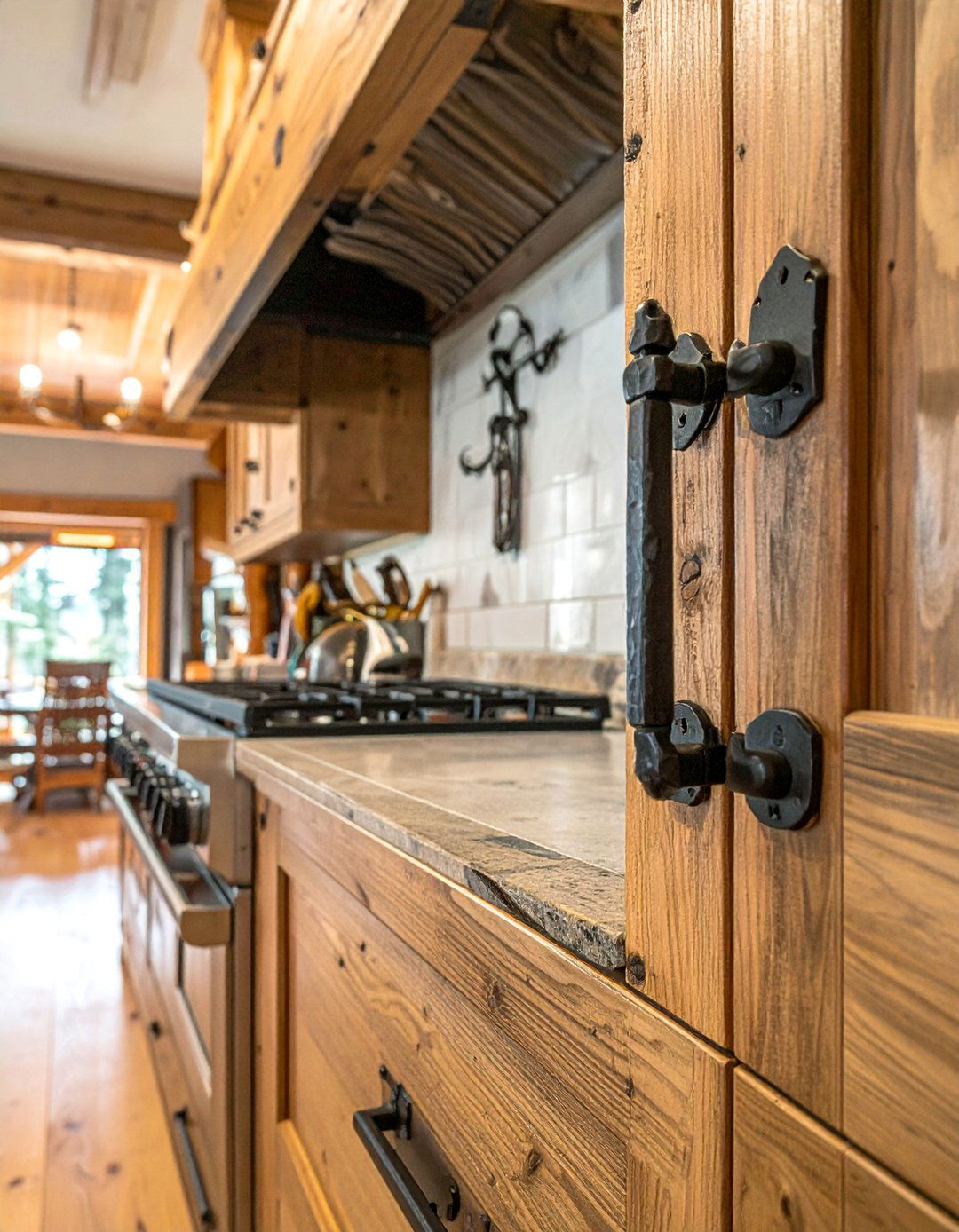
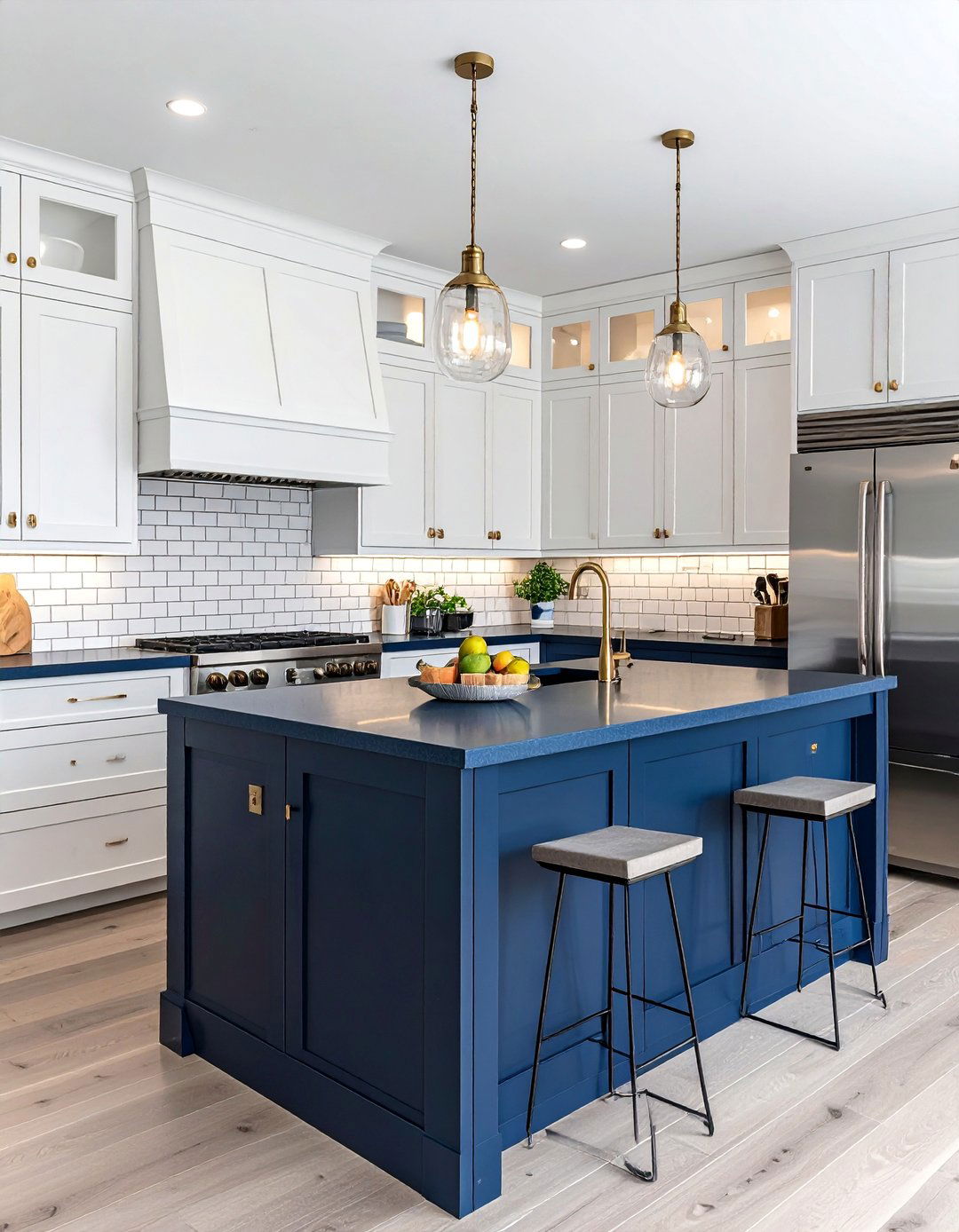
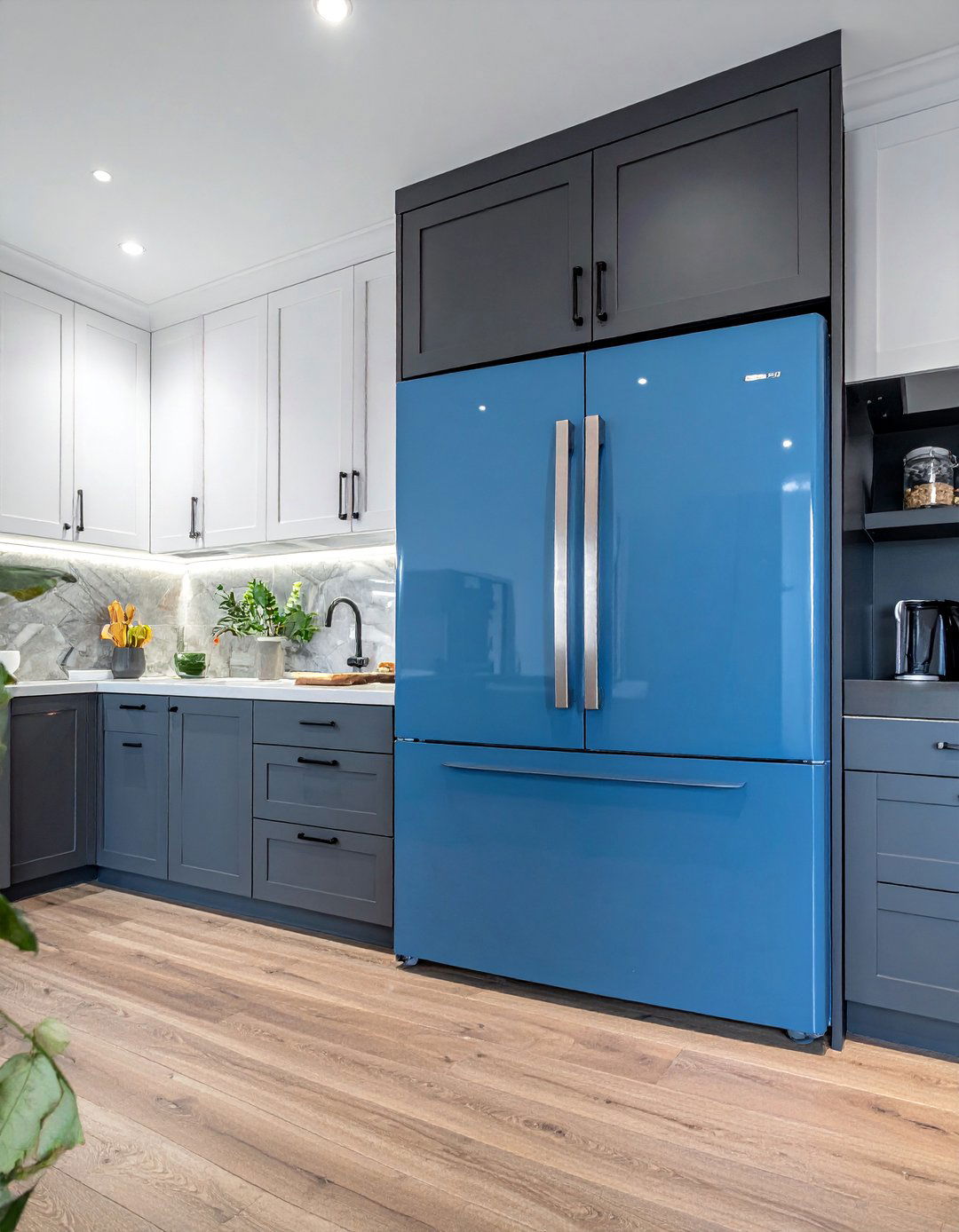
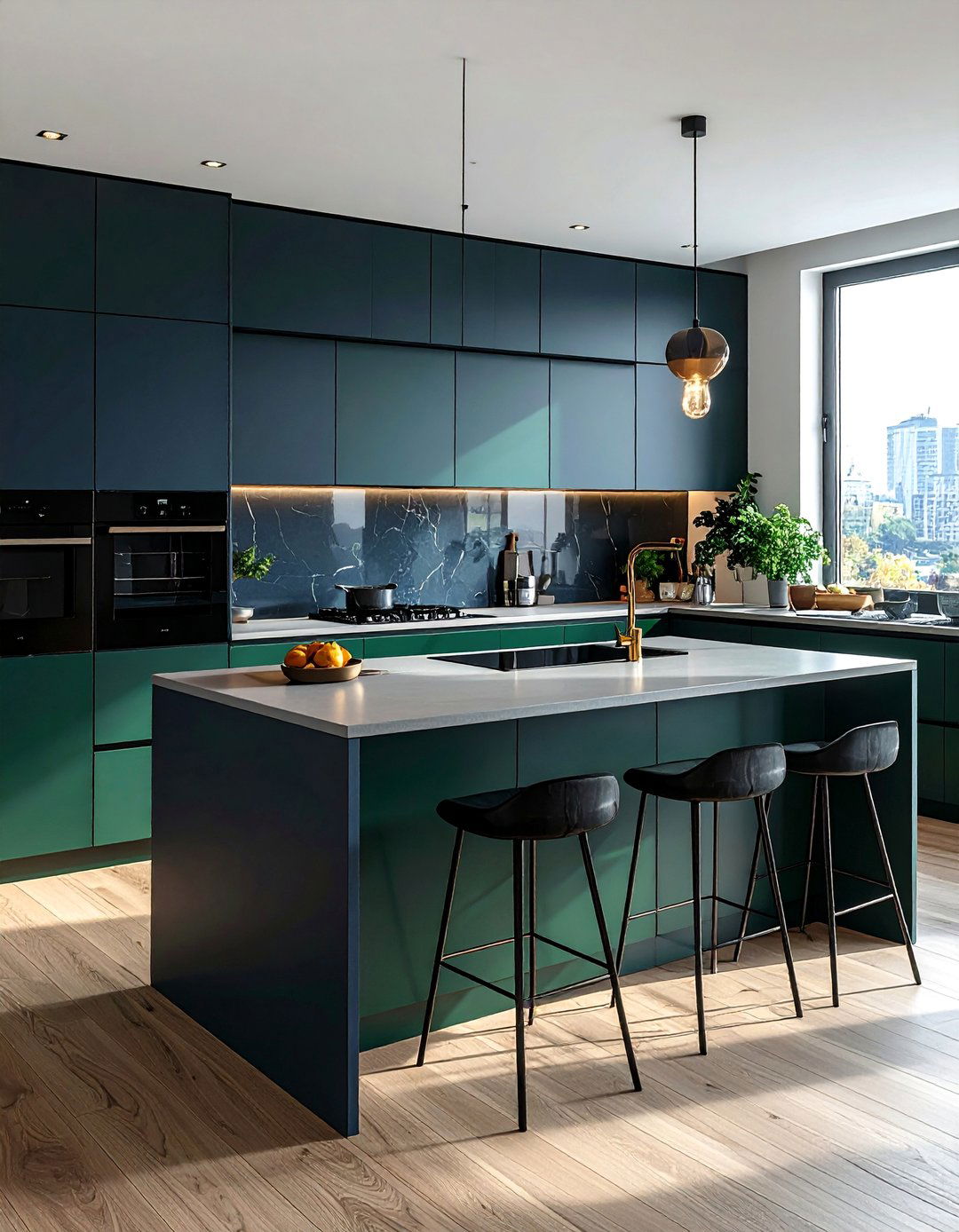
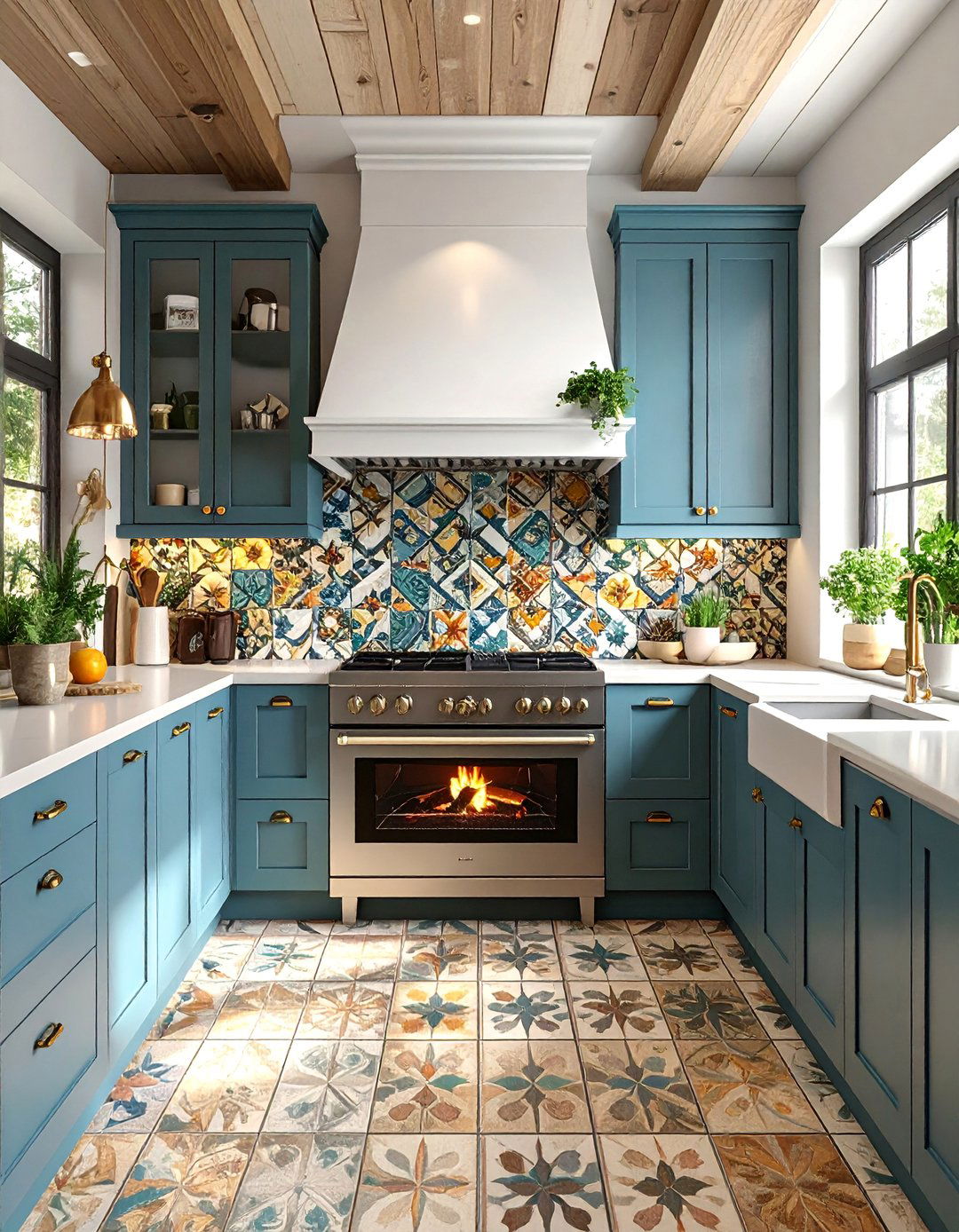
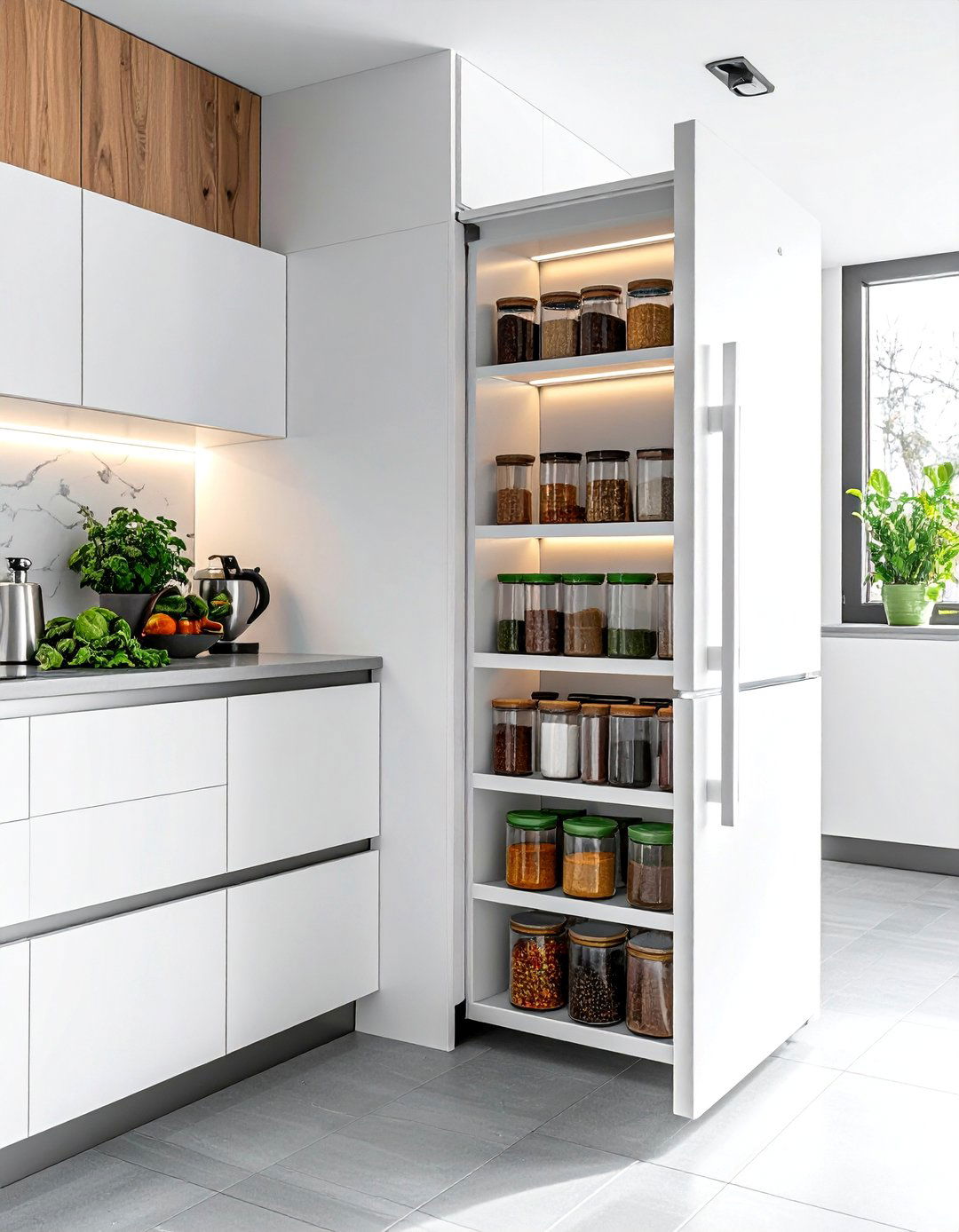
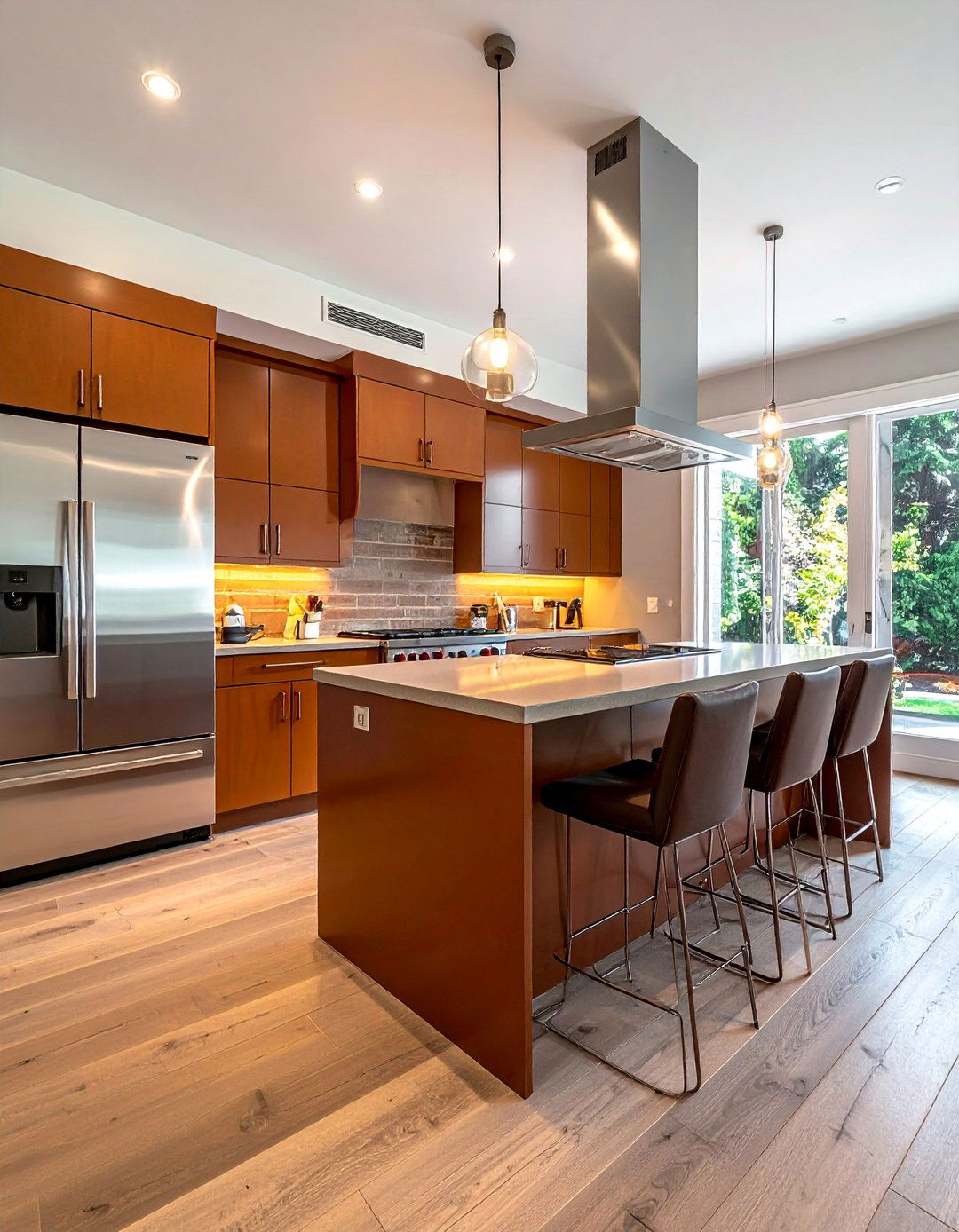
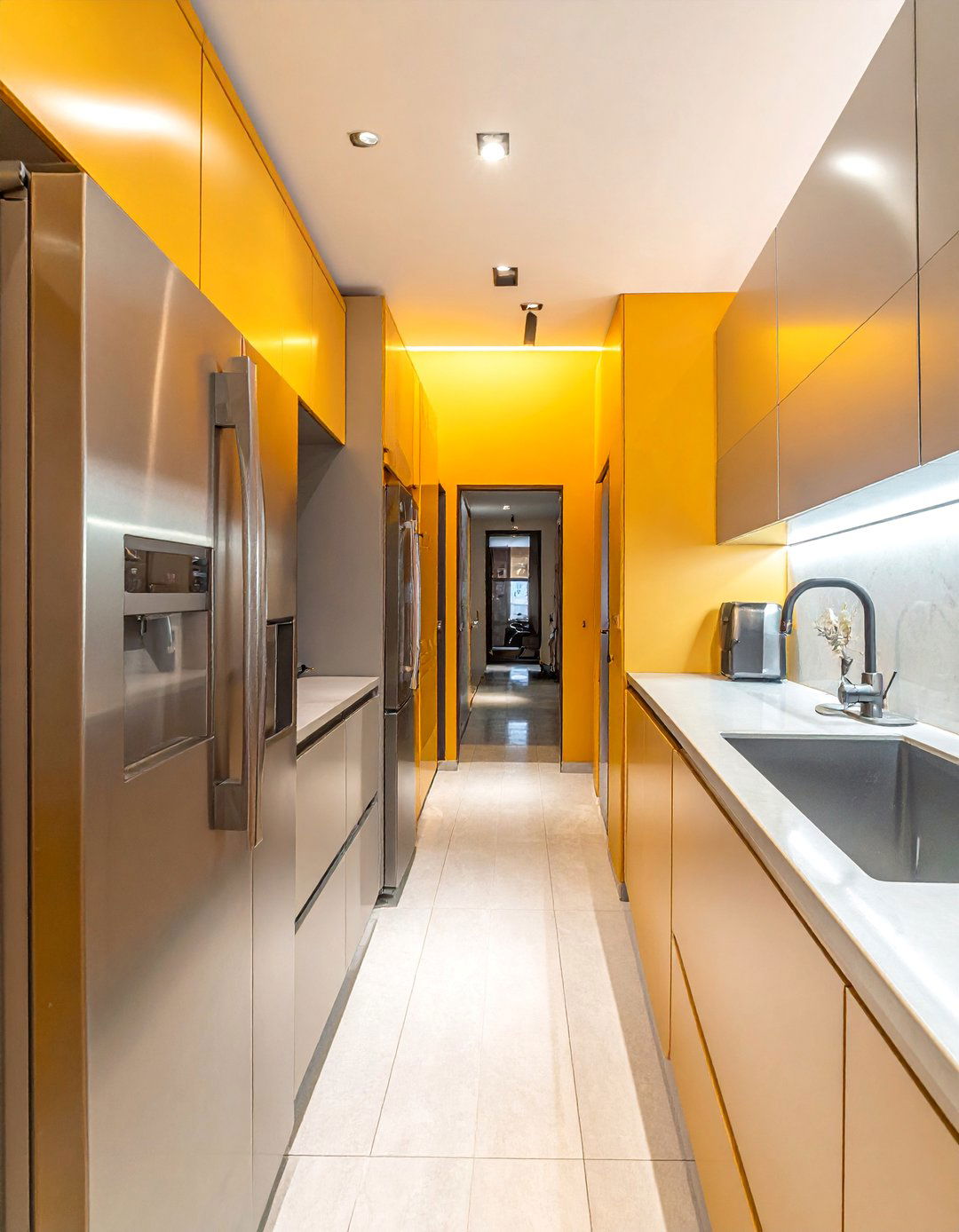
Leave a Reply